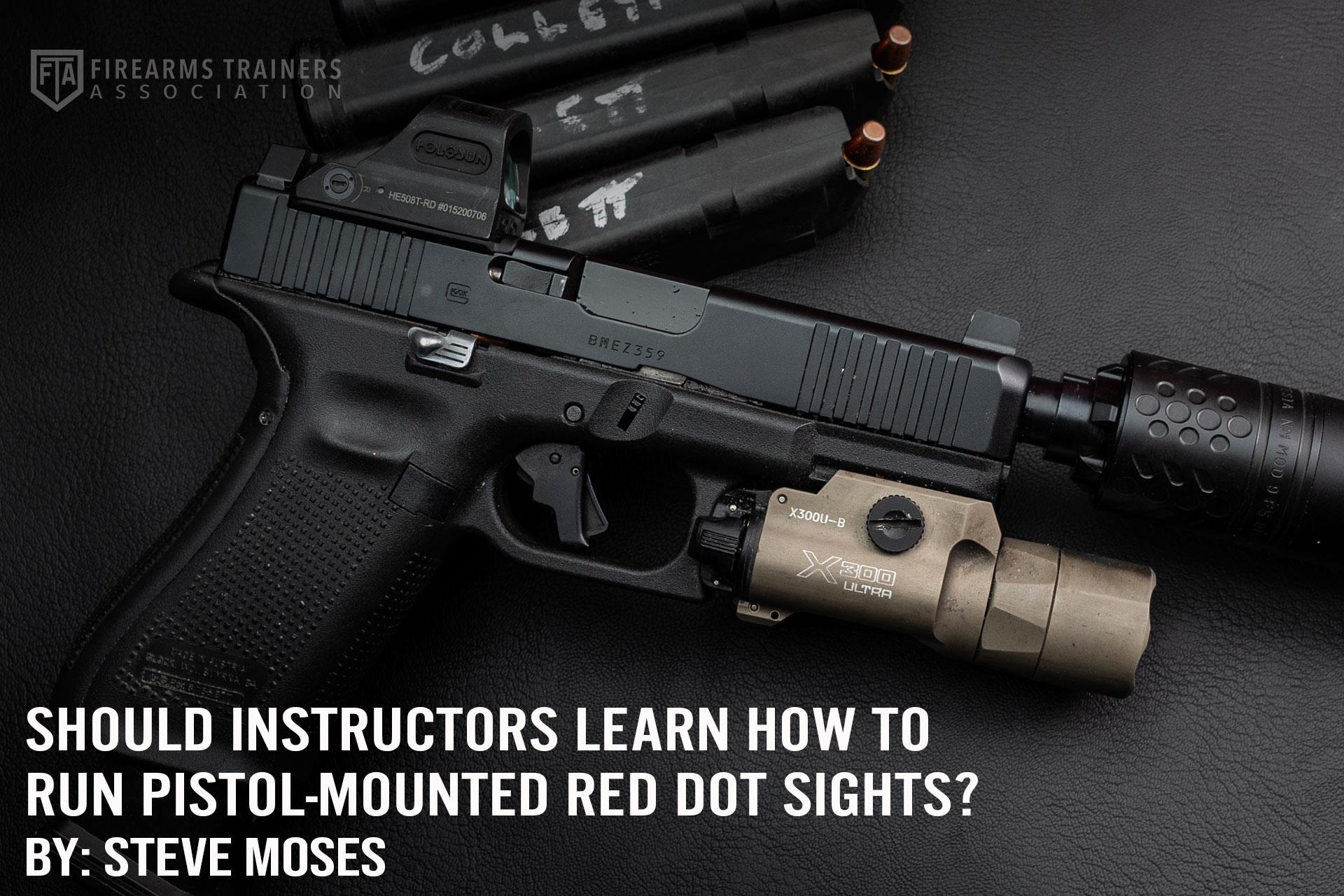
Posted on January 4, 2022 by Steve Moses in Training
Should Instructors Learn How To Run Pistol-Mounted Red Dot Sights?
More and more students taking defensive pistol courses are showing up with pistols sporting a Red Dot Sight (“RDS”). The RDS can really be a boon to older shooters whose vision is on the decline and offer some real advantages to shooters young and old when shooting targets at longer distances.
Some instructors are fond of the saying: “If it is not broke, don’t fix it.” They may correctly state that concealed carriers have been defending themselves with iron-sighted handguns for decades as the distances at which most civil-sector gunfights take place, which is likely less than the length of two cars. I believe that their take on the subject is valid. Iron sights have proven to work very well at these distances. However, the following is also most likely true:
- There are students who simply want a RDS on their pistol. We can turn them away or take their money with the understanding that those same students may leave our class unprepared to competently use their handgun to defend themselves. I can only imagine the fear that a concealed carrier might feel facing a violent criminal offender pointing a pistol in his or her direction who is unable the locate the red dot in the RDS screen because they had not learned how to establish and maintain a proper grip.
- There are students out there that are unable to see their iron sights due to eye issues. I was fast getting to that point myself and at one time thought that I might need to stop teaching. A combination of a prior radial-keratotomy, LASIK eye surgery, and cataracts had brought me to the point that I was literally seeing one fuzzy front sight stacked on top of another fuzzy front sight. I barely passed the shooting qualification portion of the Rangemaster Advanced Handgun Instructor course in 2018, and my vision continued to worsen after that. I was extremely fortunate to undergo eye surgery in 2019 by one of the best eye surgeons in Texas and can now function again quite well with iron sights, but I will always remember the frustration I felt struggling to make hits at anything past about ten yards under perfect light conditions.
- Another advantage to learning how to run a RDS for instructors is the fact that by learning to do so competently they are likely to find that they have developed a more efficient and economical draw stroke. The draw stroke with a RDS is one that eliminates unnecessary movements that cause the dot to disappear from the screen during the act of aligning the dot with the target. For the most part, the front sight on an iron-sighted pistol remains somewhere in our field of vision as soon as we have two hands on the pistol and start to drive the muzzle towards the target. This makes it relatively easy to make corrections in the alignment on the way so that by the time we reach full extension the front sight is where it is supposed to be. While these small corrections may seem to be insignificant, they certainly can eat up time. I found that I eliminated close to .25 seconds on my draw to shot and made better hits using an iron-sighted pistol as a result of cleaning up my draw. Why do I consider this to be important? I had to be taught by someone else how to properly draw a pistol sporting a RDS who described how to do it, demonstrated how to do it, ran me through drills in which I was forced to make small but meaningful adjustments to my draw stroke and grip, and made corrections and offered feedback as necessary. The final result was that not only had I become a better shooter; I had become a better instructor. I give some small credit to myself for making the decision to learn how to both run a RDS and instruct others in its use, and I give enormous credit to the instructor whose class I chose to attend. I attended a law-enforcement only red dot sight instructor course taught by Scott Jedlinski (often referred to as “Jedi”) of Modern Samurai Project. Jedi is a FTA member and highly respected instructor who teaches concealed carriers, law enforcement officers, and even certain military units that are new to the RDS system. Jedi is a USPSA Master class shooter whose students have included the US Marshals Service, NYPD Instructor Cadre, Chicago SWAT, Ohio Tactical Officers Association, Texas Tactical Officers Association, US Border Patrol, and the FBI National Tactical Training Unit.
In summary, there appears to be much to gain and little to lose for instructors who learn how to effectively use a RDS whether they personally intend to carry one or not. The only downside is the additional cost and the inevitable dings to the ego during the initial learning phase. I have managed to survive both.